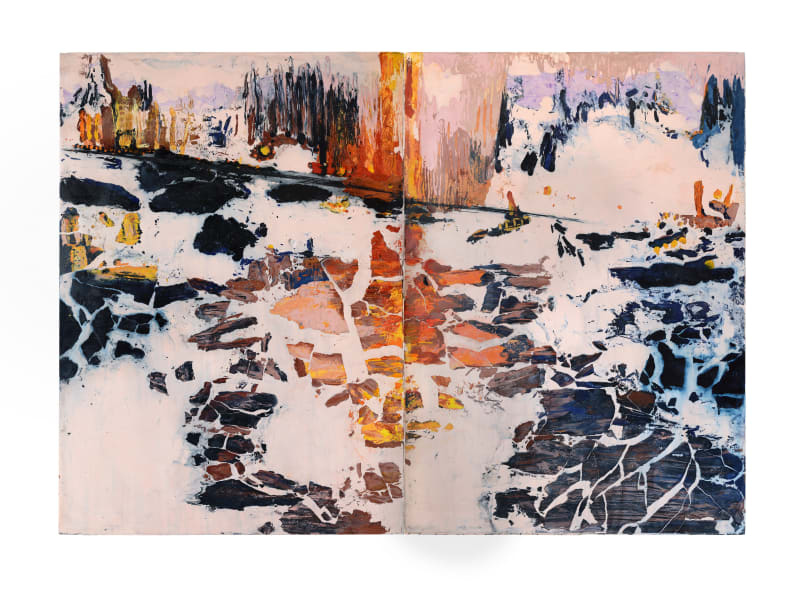Using photographs and sketches as starting points, Hudson’s newest body of work visualises the city’s iconic buildings as they are reflected on the river’s surface. From the Thames Barrier to Windsor Great Park, these works remember an important time in the city’s history, marking the winding river as a place of sanctuary during difficult times both past and present.
The works themselves, made of plaster, glue and pigment, replicate the geological layers of the riverbed. The material, able to morph from liquid to solid, echoes the fluidity of the river’s ebb and flow. Hudson’s methods are drawn from a process known as scagliola, a practice popularised in the 17th century and dormant in recent years.
The titles of Hudson’s artworks each point to a specific latitude and longitude, marking a place along the riverbank. Each location indicates a point where Hudson paused his walks to take a photograph or make a sketch of his surroundings.
The works themselves, made of plaster, glue and pigment, replicate the geological layers of the riverbed. The material, able to morph from liquid to solid, echoes the fluidity of the river’s ebb and flow. Hudson’s methods are drawn from a process known as scagliola, a practice popularised in the 17th century and dormant in recent years.
The titles of Hudson’s artworks each point to a specific latitude and longitude, marking a place along the riverbank. Each location indicates a point where Hudson paused his walks to take a photograph or make a sketch of his surroundings.
